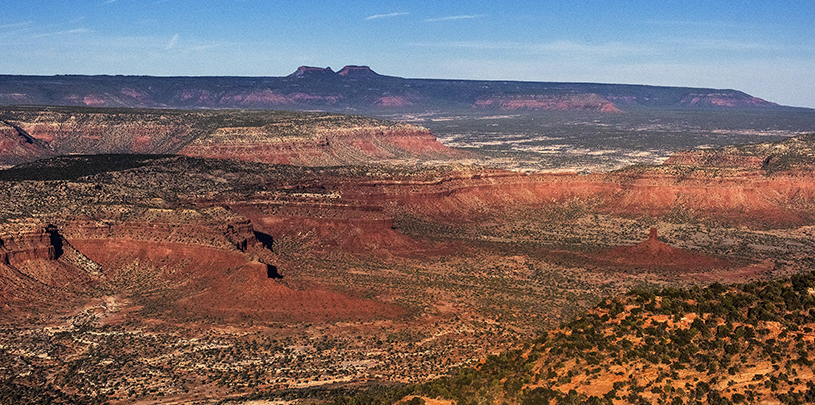
 by Tim Peterson, Cultural Landscapes Director
by Tim Peterson, Cultural Landscapes Director
Radioactive materials from two nuclear energy program research facilities in Japan run by the Japan Atomic Energy Agency have arrived in the United States, bound for processing and disposal at the controversial White Mesa uranium mill near Bears Ears National Monument. The uranium mill sits just up the road from the Ute Mountain Ute Tribe's White Mesa Reservation, where tribal members worry about the long-term effects of the mill's radioactive waste business on air quality, water quality, and public health.
According to shipping manifests, more than 275,000 pounds of radioactive materials arrived in the port of Everett, Washington on January 16, 2024. Bills of lading show the materials were shipped by the Japan Atomic Energy Agency and imported by Energy Fuels Resources, which owns and operates the White Mesa uranium mill, as well as Canyon Mine (aka Pinyon Plain Mine), a contested uranium mine near the Grand Canyon, and other uranium mines across the Southwest.
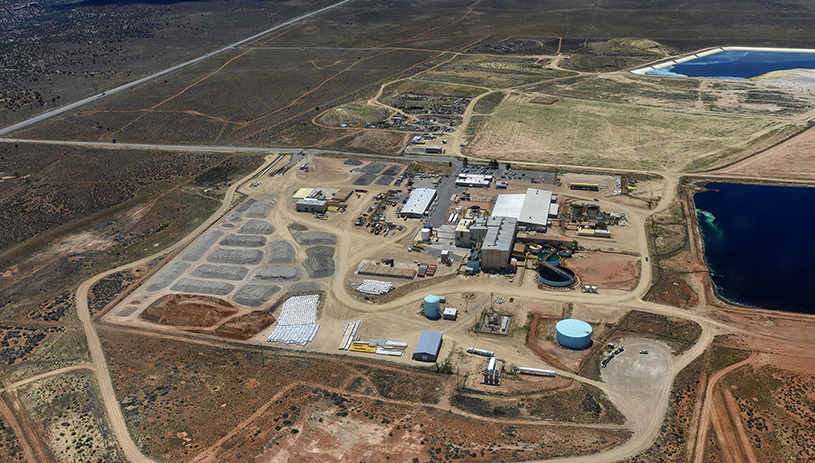
The ore pad at the White Mesa Mill on May 16, 2024. The suspected Japan Atomic Energy Agency containers can be seen at the bottom center of the photo, in a vertical white column beside the bright yellow area. Photo by Tim Peterson, flown by EcoFlight.. TIM PETERSON, FLOWN BY ECOFLIGHT
The radioactive materials include uranium ores, ore samples, cores, test-hole samples, spilled ore material, soil, rock, uranium-loaded resins and associated filter-bed sands that were used to treat water contaminated with uranium at the Japan Atomic Energy Agency research sites.
Ultimately, more than 99.5% of the imported Japan Atomic Energy Agency materials are expected to be dumped in massive open-air waste pits at the White Mesa Mill.
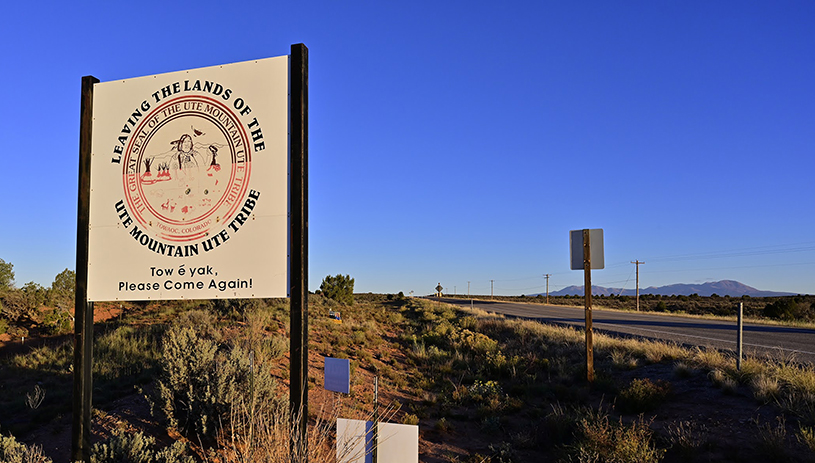
There was no public notice of the Japan Atomic Energy Agency materials being trucked to the mill and tribal members in White Mesa were not informed, either by the company or by Utah regulators, despite community concerns about increased truck traffic and potential accidents involving trucks transporting the Japanese waste on Highway 191, which runs through the heart of White Mesa.
And this isn't the first time the Japan Atomic Energy Agency has shipped radioactive materials to the White Mesa Mill.
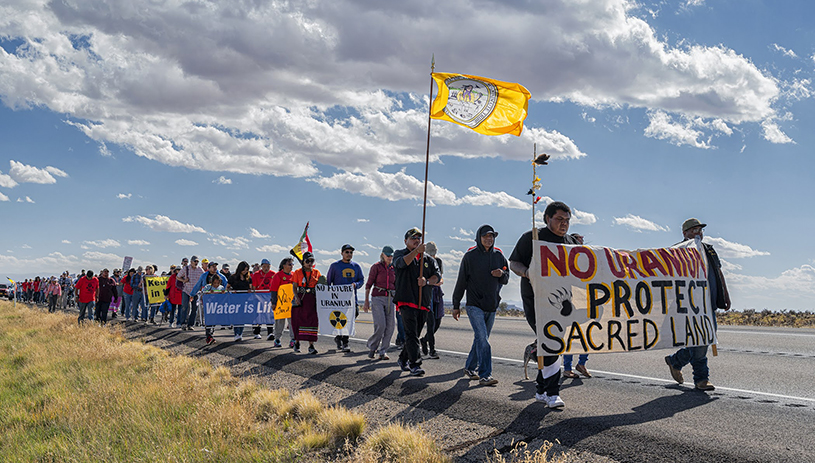 The annual spiritual walk to protest the mill, organized by the White Mesa Concerned Community. The walk travels along Highway 191 from White Mesa to the mill turnoff. TIM PETERSON
The annual spiritual walk to protest the mill, organized by the White Mesa Concerned Community. The walk travels along Highway 191 from White Mesa to the mill turnoff. TIM PETERSON
In 2005, the Japanese Atomic Energy Agency shipped a first batch of radioactive materials to White Mesa. Japanese regulators were eager to get the uranium waste off their hands, arguing that cleaning up uranium mining and milling facilities in Japan reduced the burden of waste management on future generations of Japanese citizens. But what about the citizens of White Mesa?
For decades, the White Mesa uranium mill has supplemented its uranium ore-processing business by accepting radioactive waste from around the world for processing and disposal, a practice the Ute Mountain Ute Tribe and tribal members in White Mesa, the mill's closest neighboring community, strongly oppose.
In February, leaders of the White Mesa Concerned Community group shared their concerns in a hearing before the Organization of American States’ Inter-American Commission on Human Rights. But for the most part the tribe and the community's concerns have fallen on deaf ears in Utah.
Why would the Japan Atomic Energy Agency ship its waste halfway around the world to rural Utah? More than likely, it comes down to money.
The White Mesa Mill was designed and built to process uranium ore from rock mined across the American Southwest. It's licensed as a uranium mill, not as a radioactive-waste-disposal facility. But extracting small amounts of uranium from radioactive waste and then disposing of the remaining waste for a fee has proved profitable for the mill. And because the mill didn't have to go through the arduous and expensive process of being licensed as a radioactive waste disposal facility, it can offer cheaper prices than facilities that were designed for this purpose.
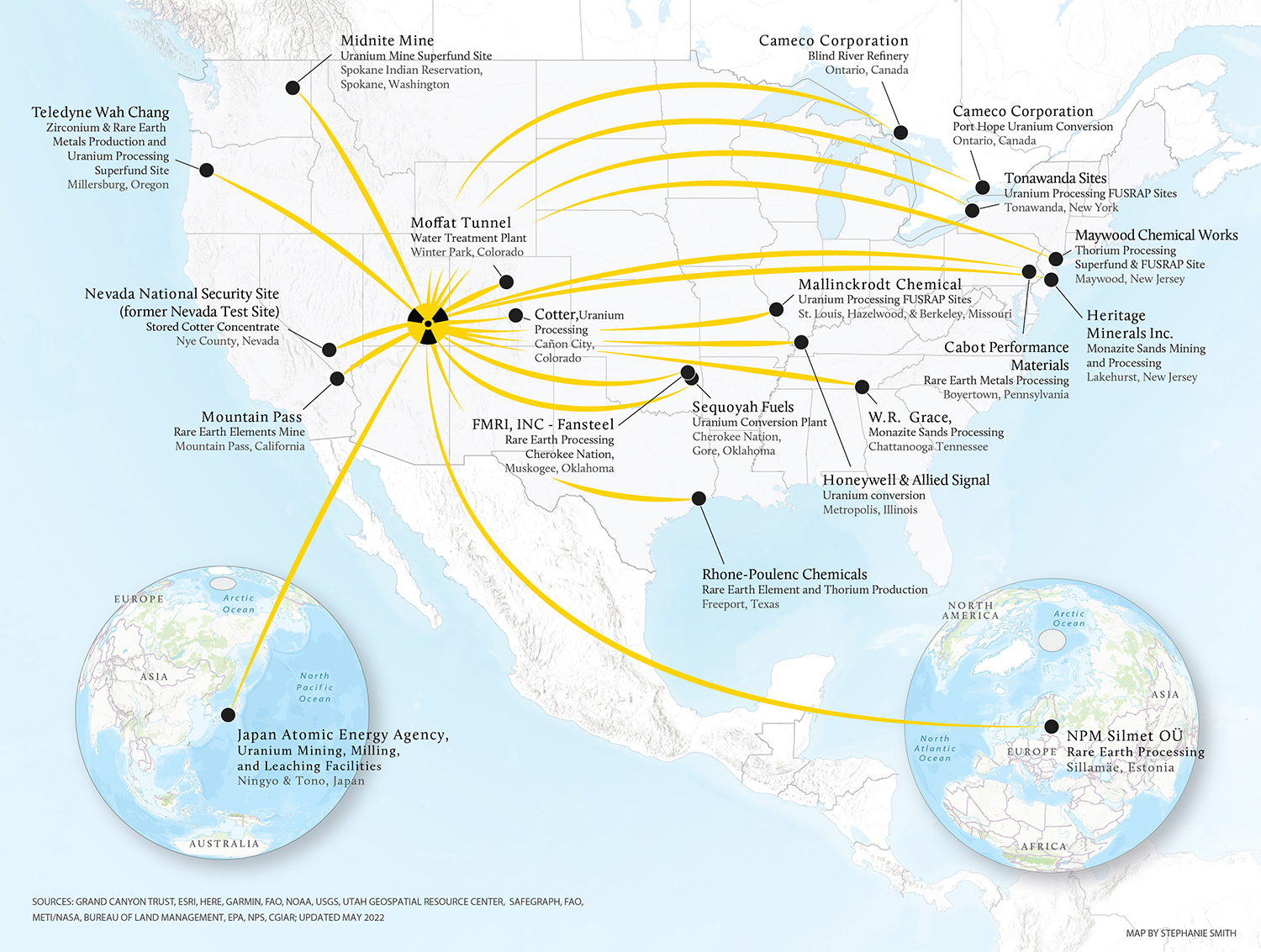
Normally, at a uranium mill, the mill’s operators pay for uranium ore. But in 2005, when the Japan Atomic Energy Agency shipped radioactive materials to the White Mesa Mill, it paid the mill's operators $5.8 million to process uranium from and permanently dispose of 1 million pounds of contaminated soils. If the mill’s operators are again getting paid to accept this latest shipment of waste from Japan, it’s not for processing uranium, but for disposing of radioactive materials the Japanese government doesn’t want in its communities.
Utah is what's called an agreement state, which means it's the state rather than the Nuclear Regulatory Commission that regulates the White Mesa uranium mill.
On May 19, 2020, the White Mesa Mill's owner, Energy Fuels Resources, informed the Utah Division of Waste Management and Radiation Control that it intended to accept and process the Japan Atomic Energy Agency waste.
About two months later, the Utah Division of Waste Management and Radiation Control decided the White Mesa Mill did not need to amend its license (again, it's licensed as a uranium mill, not a radioactive-waste disposal facility) to accept the waste.
Legally, the path was clear, and that means over 270,000 pounds of radioactive materials from Japan will ultimately join the more than 700 million pounds of radioactive wastes already buried in the White Mesa Mill's waste pits.
Act now. Urge decision-makers to protect the Bears Ears cultural landscape from radioactive waste.
A small victory in the legal case challenging Daneros uranium mine, near Bears Ears National Monument.
Read MoreGroundwater pumping at a uranium mine near the Grand Canyon will affect the canyon's springs, scientists says.
Read MoreA rally in Salt Lake City followed by a spiritual walk in White Mesa demonstrate the Ute community's determination to see uranium mill close.
Read More